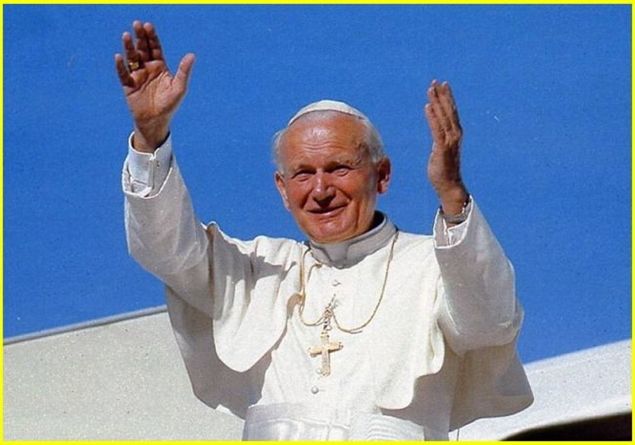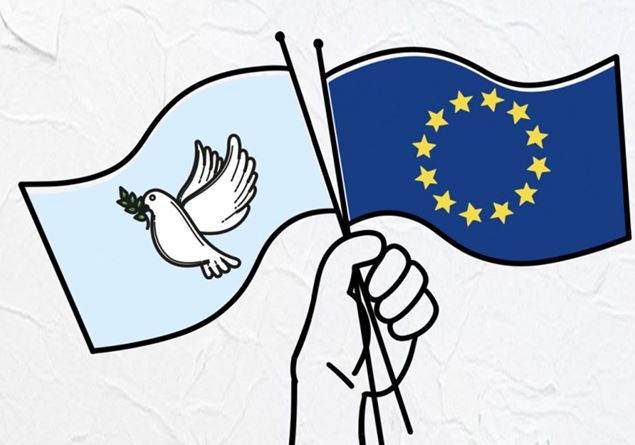
Not the date of death (2 April) nor that of birth (18 May). For the liturgical feast of Saint John Paul IIthe Church has chosen that of October 22the day on which, in 1978, Pope Wojtyla officially began his Petrine ministry after his election to the Conclave on 16 October. His pontificate lasted 26 years, 5 months and 17 days and it was the third longest in the history of the Church.
Canonized on 27 April 2014 together with John XXIII, his feast was registered in the general Roman Calendar, together with that of Roncalli, with a decree of the Congregation for Divine Worship and the Discipline of the Sacraments. «Considering the extraordinary nature of these Supreme Pontiffs in offering the clergy and faithful a singular model of virtue and in promoting life in Christ», we read in the decree, «taking into account the innumerable requests from every part of the world, the Holy Father Francis, making the unanimous wishes of the people of God his own, has given instructions that celebrations of St. John XXIII, Pope, and of St. John Paul II, Pope, are registered in the general Roman Calendar, the first on 11th, the second on 22nd October, with the degree of optional commemoration». For this reason, the text of the decree continues, «the Church today venerates them with great fervor, shining for their exemplary life, for the excellence of their doctrine and for that “science of love” which emanates from the illumination of the Spirit through the experience of the mysteries of God, and, after having enjoyed the fruitful support of their pastoral care, he now rejoices in having them as his spiritual intercessors”.
“Don’t be afraid!”
In the texts for the Mass in honor of Saint John Paul, an excerpt from the homily of the mass at the beginning of the pontificate is reported: «Don’t be afraid! Open, indeed, throw wide the doors to Christ! Open the borders of the States, the economic systems as well as the political ones, the vast fields of culture, civilization and development to his saving power. Don’t be afraid! Christ knows “what is inside man”. Only he knows!
The biography, from communist Poland to the Church of Peter
Karol Józef Wojtyła was born in Wadowicecity 50 km from Krakow, the May 18, 1920. He was the second of two sons of Karol Wojtyła and Emilia Kaczorowska, who died in 1929. His older brother Edmund, a doctor, died in 1932 and his father, an army non-commissioned officer, in 1941.
At nine years old he received his First Communion and at eighteen the sacrament of Confirmation.
After completing his studies at the Marcin Wadowita high school in Wadowice, in 1938 he enrolled inJagiellonian University in Krakow. When the Nazi occupation forces closed the University in 1939, the young Karol worked (1940-1944) in a quarry and, later, in the Solvay chemical factory in order to earn a living and avoid deportation to Germany.
Starting from 1942, feeling called to the priesthood, he attended training courses at the clandestine major seminary in Krakow, directed by the Archbishop of Krakow, Cardinal Adam Stefan Sapieha. At the same time, he was one of the promoters of the “Rhapsodic Theatre”, also clandestine.
After the war, he continued his studies in the newly opened major seminary in Kraków and in the Faculty of Theology of the Jagiellonian University, until his ordination to the priesthood in Kraków on 1 November 1946.
Subsequently, he was sent by Cardinal Sapieha to Rome, where he obtained a doctorate in theology (1948), with a thesis on the theme of faith in the works of Saint John of the Cross. In that period, during his holidays, he exercised pastoral ministry among Polish emigrants in France, Belgium and Holland. In 1948 he returned to Poland and was first coadjutor in the parish of Niegowić, near Krakow, and then in that of San Floriano, in the city.
He was university chaplain until 1951, when he resumed his philosophical and theological studies. In 1953 he presented a thesis on the possibility of founding a Christian ethic starting from Max Scheler’s ethical system at the Catholic University of Lublin. Later, he became a professor of Moral Theology and Ethics in the major seminary of Krakow and in the Faculty of Theology of Lublin.
On 4 July 1958, Pope Pius XII appointed him titular bishop of Ombi and auxiliary of Krakow. He received episcopal ordination on 28 September 1958 in the Wawel Cathedral (Krakow), from the hands of Archbishop Eugeniusz Baziak.
On 13 January 1964 he was appointed Archbishop of Krakow by Paul VI who created him Cardinal on 26 June 1967.
He participated in the Vatican Council II (1962-65) with an important contribution in the drafting of the constitution Gaudium et spes. Cardinal Wojtyła also took part in the 5 assemblies of the Synod of Bishops prior to his Pontificate.
The tomb of John Paul II in St. Peter’s Basilica
A pontificate of great numbers
From the beginning of his Pontificate, Pope John Paul II has accomplished 146 pastoral visits to Italy and, as Bishop of Rome, he visited 317 of the current 332 Roman parishes. The apostolic journeys around the world – an expression of the constant pastoral concern of the Successor of Peter for all the Churches – were 104.
Among his main documents are 14 Encyclicals, 15 Apostolic Exhortations, 11 Apostolic Constitutions and 45 Apostolic Letters.
5 books are also ascribed to Pope John Paul II: Crossing the threshold of hope (October 1994); Gift and mystery: on the fiftieth anniversary of my priesthood (November 1996); Roman triptych – Meditations in the form of poetry (March 2003); Get up, let’s go! (May 2004) e Memory and Identity (February 2005).
Pope John Paul II celebrated 147 beatification ceremonies – in which he proclaimed 1338 blessed – and 51 canonizations, for a total of 482 saints. He held 9 consistories, in which he created 231 (+ 1 in pectore) Cardinals. He also presided over 6 plenary meetings of the College of Cardinals. Since 1978 he has convened 15 assemblies of the Synod of Bishops: 6 ordinary general ones (1980, 1983, 1987, 1990; 1994 and 2001), 1 extraordinary general assembly (1985) and 8 special assemblies (1980, 1991, 1994, 1995, 1997, 1998 and 1999).
No Pope has met as many people as John Paul II: more than 17 million 600 thousand pilgrims participated in the general audiences on Wednesday (over 1160), without counting all the other special audiences and religious ceremonies (more than 8 million pilgrims during the Great Jubilee of the year 2000 alone)as well as the millions of faithful met during pastoral visits in Italy and around the world; numerous government figures were also received in audiences: just remember the 38 official visits and the other 738 hearings or meetings with Heads of State, as well as the 246 hearings and meetings with prime ministers.







